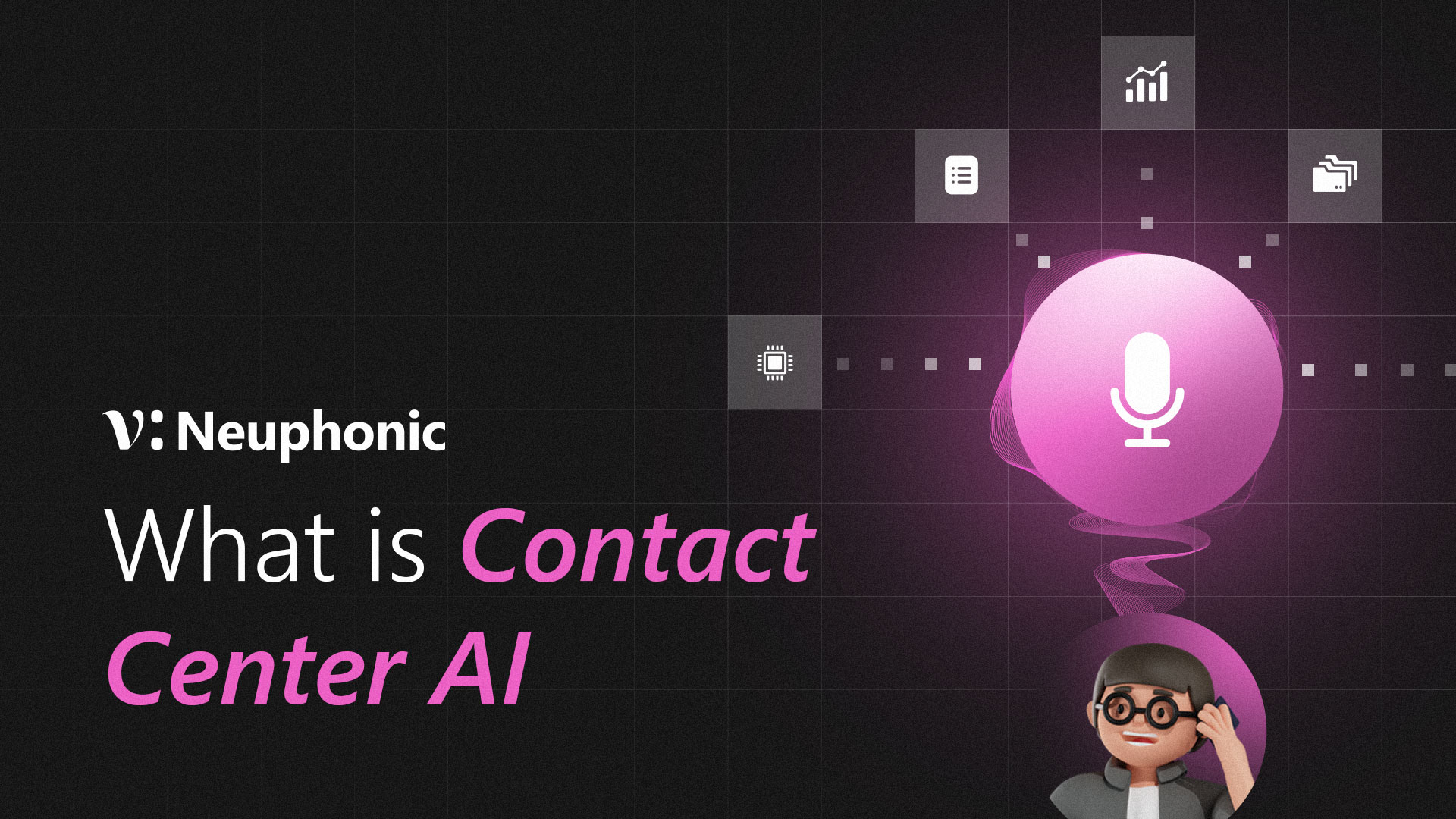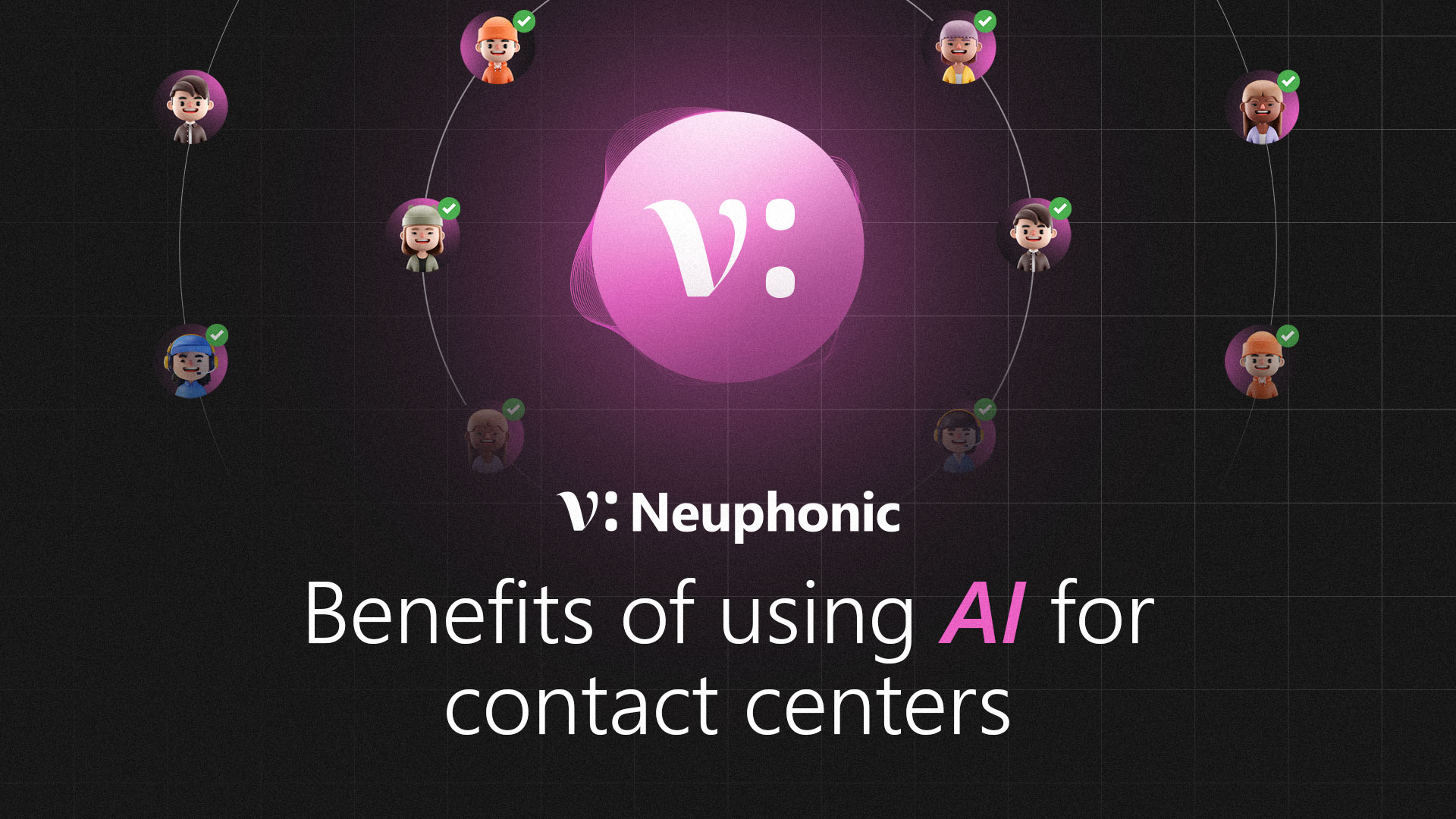What exactly is contact centre AI (CCAI)? Here's your full guide, including benefits and features, into how artificial intelligence is transforming customer service
Are your customers frustrated with the speed and understanding of your human-run customer service center? Are your team lacking context to drive better outcomes for customers and underperforming when faced with huge volume?
Thankfully in 2025 there is a better way. This year, artificial intelligence has started to transform customer service operations thanks to new low latency, high quality, hyper-realistic models, as well as the ability to gather and understand historic customer context from all your data sources. Enterprises around the world are turning to contact center AI to meet rising customer expectations, scale service operations, and reduce costs.
With the help of artificial intelligence, businesses can now enhance customer interactions, streamline repetitive tasks, and improve overall service quality while empowering human agents to focus on more complex issues.
But what exactly is contact center AI (CCAI), and why is it becoming the new standard for efficient service delivery? In this guide, we’ll walk through everything you need to know, including key features, benefits, challenges, and how your business can leverage Neuphonic’s cutting-edge solutions to improve call center operations in real time.
What is Contact Center AI?

Contact center AI refers to the use of artificial intelligence technology to automate, enhance, and streamline customer service teams across digital channels, phone, email, chat, and more. Unlike traditional contact centers that rely heavily on live agents for every customer touchpoint, AI-powered centers incorporate tools like conversational AI, natural language processing (NLP), predictive analytics, and machine learning to provide intelligent self-service options and support human staff.
Tools like virtual assistants, interactive voice response (IVR) systems, and AI-powered chatbots can handle routine and repetitive tasks such as customer inquiries, password resets, or appointment bookings. These tools deliver real-time support, relevant information, and reduce the dependency on human intervention, significantly lowering operational costs.
Tech giants like Google Cloud are leading the way with platforms such as Google Contact Center AI (CCAI), offering integrated AI solutions for real-time agent assistance, intelligent call routing, and sentiment analysis, while tech startups like Neuphonic are offering ultimate human-like voices for AI agents, indistinguishable from real humans.
How are AI agents used in a contact center?
AI agents operate across the entire customer journey, from the first point of contact to resolution. They provide a mix of self-service options and agent assistance that help manage high call volumes, improve response times, and capture real-time insights about customer behavior and customer intent.
Use cases include:
-
Virtual agents answering basic customer queries, using TTS providers like Neuphonic for customer phone calls
-
Intelligent routing to connect customers with the right agent based on historical data and customer data
-
Real-time agent assistance that delivers actionable insights and suggestions during live calls
-
Automated after-call work to improve agent productivity and reduce average handle time
-
Social media automated responses to serve customers where they feel most comfortable
-
AI-powered chatbots for aftersales care
-
Sentiment analysis to track customer sentiment and adjust responses accordingly
AI agents also assist in quality assurance by monitoring calls and identifying areas of improvement in agent performance and service operations. They can recommend best practices, support quality management, and optimize the customer experience in real time.
The benefits of using AI for contact centers

For contact center leaders, the benefits of AI adoption are compelling:
1. Increased operational efficiency
As AI becomes more prominent in enterprise, it’s important to give your human team leverage on their time. AI significantly reduces after-call work, helps with knowledge base management, and automates repetitive tasks that typically bog down human agents.
2. Enhanced customer engagement
No-one likes waiting in a call queue with elevator music adding to the frustration. AI provides real-time information, ensures customers get relevant information faster, and supports self-service options through virtual assistants. AI agents can be trained to react with empathy or be more reactive to realtime customer sentiment.
3. Reduced operational costs
Human time is valuable, but expensive if used in the wrong way. By offloading routine tasks to AI, contact centers can reduce staffing needs while maintaining high-quality service delivery.
4. Improved agent efficiency
You want your AI to be enriched with all the data at your fingertips in order to drive towards the best customer resolution. Tools like real-time agent assistance allow agents to resolve queries more quickly, enhancing agent efficiency and agent performance.
5. Personalized customer support
Don’t you hate having to repeat your name and personal details to every human rep you getting passed to in traditional call centers? With generative AI, contact centers can understand customer needs and deliver tailored responses that feel more like human interaction than scripted replies.
6. Faster response times
We’re all busy and time spent on calls is time wasted. By using intelligent call routing and predictive analytics, AI ensures customers are quickly matched with the right support resource, improving overall customer satisfaction and giving you valuable insights as leaders.
The challenges of using AI for contact centers

While the benefits are impressive, integrating AI into a contact center environment comes with its own set of challenges:
1. Data security
Protecting customer data is critical. Enterprises must ensure that AI tools comply with data privacy regulations and offer enterprise-grade data security. Complying with regulations like GDPR in Europe or HIPAA for healthcare use is extremely important.
2. Balancing human interaction
Even the best AI solutions can’t fully replace human interaction, but it’s about finding the right moments where it’s cost effective for humans to step in. Finding the right balance between automation and empathy is key. However AI is getting better every month as new models are released; it might not be long before all AI interaction is indistinguishable from human touch
3. Complex integration
Incorporating AI into existing customer relationship management (CRM) systems and legacy tools can be technically demanding and time consuming. Platforms will often require the assistance of your developer and engineering teams who are already pressed with feature development and firefighting. Any use of their time requires careful planning.
4. Customer expectations
Today’s customers expect a seamless experience across all channels. Poorly implemented AI can lead to inconsistent service, poor reviews and lower CSAT (customer satisfaction) scores.
5. Responsible AI usage
Ensuring responsible AI practices, such as eliminating bias in decision-making and maintaining transparency in customer communications, is essential. AI is good at a lot of things, but there are some areas where it makes sense to have human oversight, particularly in business critical or high value cases.
Implementation of AI in contact centers
Step 1: Careful planning
Start with a clear understanding of your goals: Are you trying to reduce call volumes? Improve agent performance? Enhance customer engagement? Know the North Star Metric for your contact center and set a target for how introducing AI will help you hit those metrics sooner
Step 2: Choose the right AI platform
Evaluate platforms based on features like real-time media transport, quality management, transcription services, and integration with your existing systems. Tools like Google CCAI solutions provide end-to-end support for AI-powered contact centers.
Step 3: Pilot key features
Start small. Implement AI tools for basic customer interactions and expand as you see results.
Step 4: Train your contact center agents
Make sure contact center agents are trained to work alongside AI. This ensures smooth collaboration between AI-powered tools and human agents.
Step 5: Monitor and optimize
Use real-time insights, historical data, and quality assurance metrics to track progress and continuously improve your AI deployment.
How Neuphonic can help with real-time customer service

Neuphonic specializes in AI voice agents built using advanced text-to-speech and machine learning tech. Our platform supports real-time voice interactions that sound human, are multilingual, and integrate easily with existing AI call centers and AI platforms, like Vapi, LiveKit or Pipecat.
More importantly, we offer high concurrency, low latency and high quality human-like voices, allowing you to scale AI voice call agents to tens of thousands of hours per month at a fraction of the price of larger, more cumbersome models.
Whether you’re trying to enhance agent productivity, reduce average handle time, or provide exceptional customer experiences at scale, contact Neuphonic Enterprise sales to discuss how we can become your new contact center partners.
Our core capabilities:
-
Generative AI-powered voice agents
-
Realistic natural language processing and speech synthesis
-
Seamless integration with CRMs, ticketing systems, and digital channels
-
Real-time actionable insights and analytics
-
Support for high call volumes and customer queries
We help enterprises:
-
Cut down operational costs
-
Improve customer satisfaction
-
Deliver the best way to handle inbound and outbound voice traffic
-
Maintain full control over service operations with our custom AI stack
Key trends for AI call centers in 2025
AI-powered contact centers are not just a trend—they’re the future of customer service. By combining the best of AI technology, human agents, and real-time intelligence, enterprises can meet growing customer expectations while unlocking new levels of efficiency and insight.
Here’s where we think AI is going over the coming months:
-
Improved prosody: including natural emotion for a more compelling human-like agent
-
Cross-platform and omnichannel: be where your customers are, on social media, voice, chat, email, text and more
-
Ingest and understand more data: AI contact centers can process text, image, video, documents, databases and more
-
AR & VR: As AI hardware improves, contact centers can offer more effective remedies for customers like providing visual troubleshooting
-
Self service: Customers no longer have to wait for issues and subsequent assistance - they can find solutions to intricate queries in realtime as they happen
With the right tools, including Neuphonic’s voice AI platform, you can harness the power of artificial intelligence to transform your contact center operations. Start with the basics, scale intelligently, and ensure that every customer interaction is meaningful, efficient, and tailored to the individual.
Ready to future-proof your contact center? Reach out to Neuphonic today to learn how our AI voice technology can help deliver exceptional customer experiences across the entire journey.

![BEST AI Call Center Software For Business [2025] thumbnail](/_image?href=%2F_astro%2Fai-call-center-software-for-business.VnJxs2az.jpg&w=1600&h=900&f=webp)
![AI in Customer Service [Your Need To Know Guide] thumbnail](/_image?href=%2F_astro%2Fai-in-customer-service.M2RR3vZw.jpg&w=1600&h=900&f=webp)
